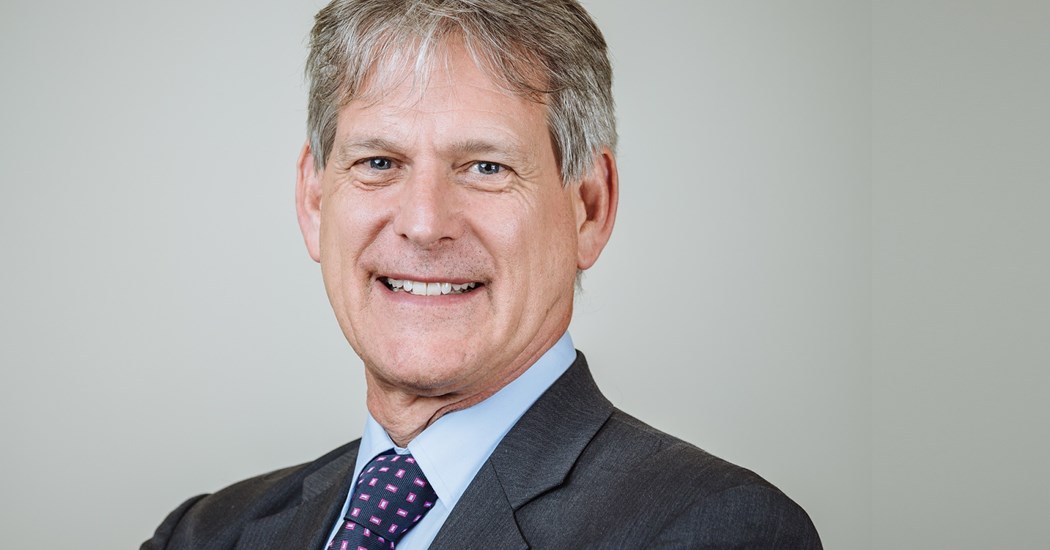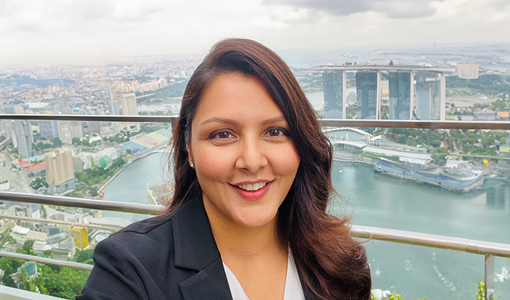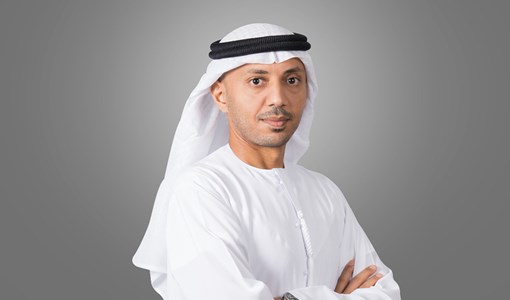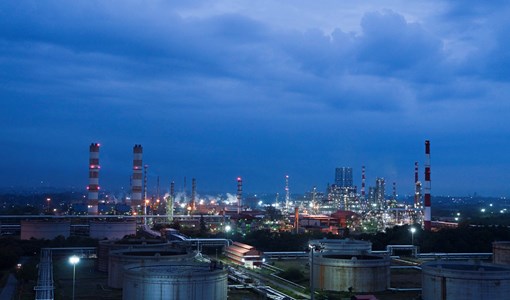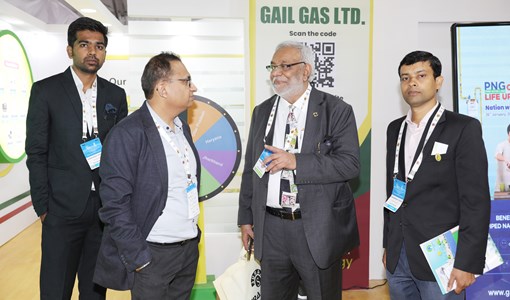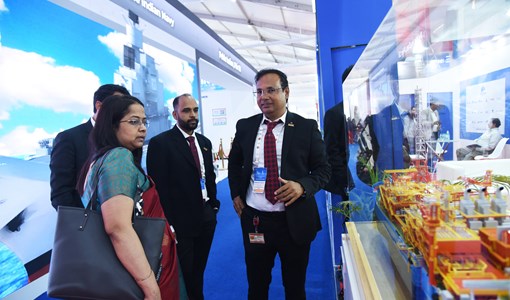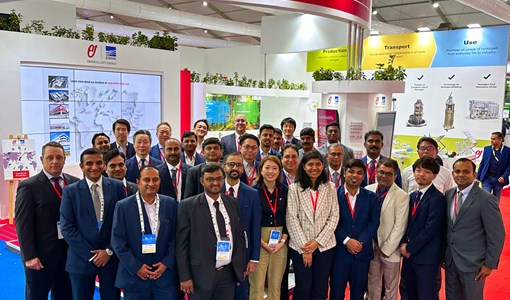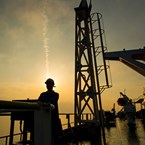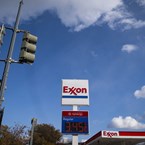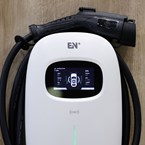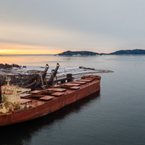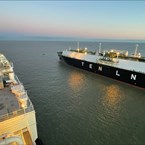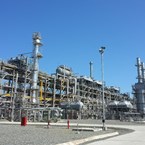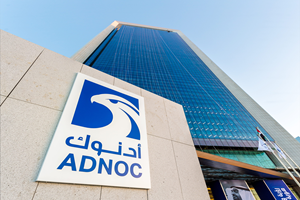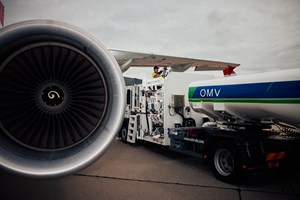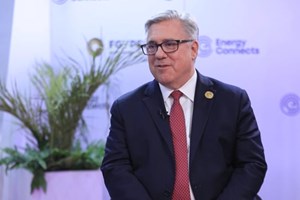Gas opportunities galore in Kurdistan for Dana Gas
Dr Patrick Allman-Ward speaks exclusively to Pipeline Magazine’s Julian Walker about plans to further grow and expand its operations in the Kurdistan Region of Iraq
What is the latest update on your Kurdistan operations?
We recently updated our shareholders in the Q1 2019 financials release, highlighting how we remain busy in the Kurdistan Region of Iraq (KRI), delivering on the promises and ambitions we set ourselves. Our group production numbers in the KRI leapt to 32,750 boepd in Q1 2019 from 26,300 boepd in Q1 2018. This 24 per cent year-on-year increase was the result of the additional 100 MMscf/d that came onstream in October last year from the debottlenecking project.
In February, we signed a new 20-year Gas Sales Agreement which allows Pearl Petroleum to proceed with its expansion plan that will add 250 MMscf/d to our production while bolstering much-needed domestic electricity generation. The project, due to come on stream in 2021, is the first phase of an US$800 million expansion underway at the Khor Mor plant that includes two new gas production trains and drilling new wells to raise production ultimately to 900 MMscf/d by 2022. The expansion and multi-well drilling program are funded primarily by the sums set aside in the settlement agreement and from additional cash coming from the expanded production streams, multilateral loans, bank debt and a third-party financing arrangement. We are not expecting to have to supplement these with any direct cash calls on Dana Gas.
How important is Kurdistan to Dana Gas’ natural gas growth strategy?
It is incredibly important. We have plans in place to further grow and expand our production. The company will unlock multibillion dollars of value by developing the Khor Mor and Chemchemal Fields.
The Field Development Plan (FDP) for the Khor Mor was approved in September 2018, and the initial phase of this production increase was the fast-track debottlenecking project of the existing Khor Mor gas plant. The expansion of the gas processing plant consisted of a series of plant additions and modifi cations to debottleneck throughput, raising output capacity by 30 per cent from 305 MMscf/d to 400 MMscf/d, as well as a further 2,000 barrels per day of condensate, exceeding the initially set target of a 20-25 per cent increase in production. The fast-tracking and completion of the debottlenecking project in 2018 boosted production to an annual average of 26,650 boepd from 25,750 boepd in 2017.
The real impact was seen in Q1 2019 when output was 32,750, 24 per cent higher on Q1 2018 production numbers. Plans now are underway to increase production by further 125 per cent by 2022 through the installation of two 250 MMscf/d gas processing trains, which are expected to be completed in two phases in 2021 and 2022.
This will increase the capacity to process gas and condensate from the Khor Mor Field by an additional 500 MMscf/d and 20 kbbld respectively. With the price of oil price ranging between $60- 70 per barrel, the new trains are expected to add $175-$200 million to Dana Gas share of revenues and project’s cash flows per annum. Approval for an FDP for the Chemchemal field is being progressed which will add further production to the company’s total KRI output.
Are you looking to increase production in Kurdistan?
We are going to put two 250 mcf per day gas trains in place, so that in the next two to three years the existing capacity will more than double from 400 mcf to nearly 900 mcf per day. There will be a commensurate doubling of the condensate production. We expect that when these two additional trains are up and running, we will be producing 900 mcf per day of gas, 36,000 boepd of condensate and 1,200 tonnes per day of LPG. Earlier this year, we also signed a new 20-year Gas Sales Agreement with the KRG to enable the sale of 250 mcf per day (or one entire gas train), which we aim to get onstream by 2021. We have already started looking at options for sales, such as through Turkey, for the subsequent 250 mcf per day of production due to come onstream by 2022.
In addition, we are carrying out exploration appraisal drilling in the Chemchemal field, and a field development plan is being progressed. We hope to be able to bring some of these gas resources from the Chemchemal field quickly, possibly as early as next year through an Early Production Facility. We believe that together these two fields have in the region of 75 Tcf of in-place gas resources. Just to give you a sense of scale, it is more than twice the size of Eni’s Zohr discovery in Egypt, and it is about the same size as the Troll gasfield in Europe, which has been one of the fields providing the baseload of gas production for European consumption over the course of the last 15 or 20 years.
Are you looking to invest more in your Kurdistan operations?
As part of our ten years of operations in the KRI, Pearl Petroleum asked PwC to lead an in-depth study to assess the wider socio-economic benefits enabled by Pearl’s activity. In the last ten years, Pearl Petroleum’s total investment was approximately $1.3 billion. This contributed a minimum of $10.7 billion in GDP and $19.2 billion in savings for non-imports of fuels; as well as the employment of 20,000 jobs. The next ten years will see us invest a total of $4.3 billion and see a total of $33.2 billion in savings; as well as adding 84,000 more jobs. We aim to take production up to 1,400 MMscf/d, and that will take significant investment. We are here for the long-term. Our future is Kurdistan’s future.
KEEPING THE ENERGY INDUSTRY CONNECTED
Subscribe to our newsletter and get the best of Energy Connects directly to your inbox each week.
By subscribing, you agree to the processing of your personal data by dmg events as described in the Privacy Policy.

Energy Workforce helps bridge the gender gap in the industry
Mar 08, 2024
EGYPES Climatech champion on a mission to combat climate change
Mar 04, 2024
Fertiglobe’s sustainability journey
Feb 29, 2024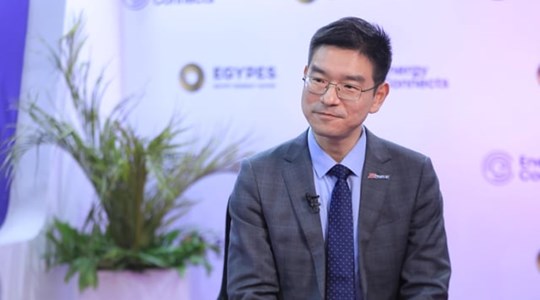
Neway sees strong growth in Africa
Feb 27, 2024
P&O Maritime Logistics pushing for greater decarbonisation
Feb 27, 2024
India’s energy sector presents lucrative opportunities for global companies
Jan 31, 2024
Oil India charts the course to ambitious energy growth
Jan 25, 2024
Maritime sector is stepping up to the challenges of decarbonisation
Jan 08, 2024
COP28: turning transition challenges into clean energy opportunities
Dec 08, 2023
Why 2030 is a pivotal year in the race to net zero
Oct 26, 2023Partner content

Ebara Elliott Energy offers a range of products for a sustainable energy economy

Essar outlines how its CBM contribution is bolstering for India’s energy landscape

Positioning petrochemicals market in the emerging circular economy

Navigating markets and creating significant regional opportunities with Spectrum


